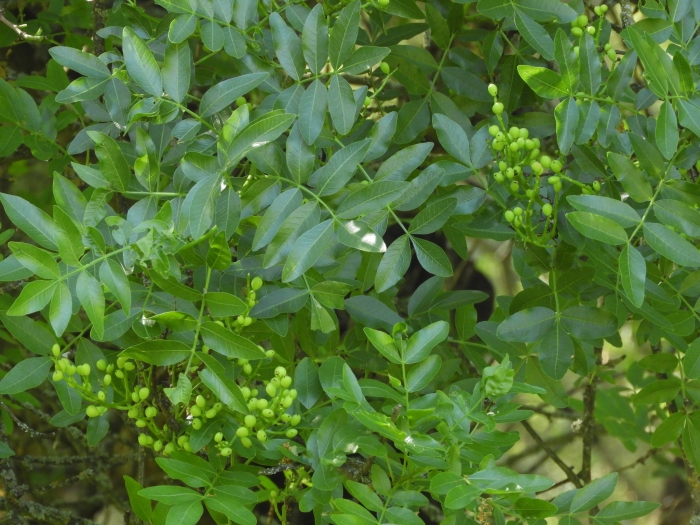Mt. Atlas Mastic Tree
(Pistacia atlantica)
Mt. Atlas Mastic Tree (Pistacia atlantica)
/
/

Mary K. Hanson
CC BY 4.0




























Estimated Native Range
Summary
The Mt. Atlas Mastic Tree is valued for its hardiness and adaptability to a range of conditions, making it suitable for xeriscaping and as a windbreak in arid and semi-arid regions. It is also used for reforestation and erosion control due to its robust root system. In cultivation, it thrives in full sun or part shade and can tolerate low to medium water conditions, preferring well-drained soils. While it is drought-tolerant once established, it benefits from occasional deep watering during prolonged dry periods. Gardeners should be aware that Pistacia atlantica can be susceptible to root rot if overwatered or planted in poorly drained soils. Additionally, it is potentially invasive in some regions, so it is crucial to consult local guidelines before planting.CC BY-SA 4.0
Plant Description
- Plant Type: Tree
- Height: 25-40 feet
- Width: 20-40 feet
- Growth Rate: Slow
- Flower Color: N/A
- Flowering Season: Spring
- Leaf Retention: Semi-Deciduous
Growth Requirements
- Sun: Full Sun, Part Shade
- Water: Low, Medium
- Drainage: Medium
Common Uses
Bird Garden, Drought Tolerant, Edible*Disclaimer: Easyscape's listed plant edibility is for informational use. Always verify the safety and proper identification of any plant before consumption., Low Maintenance
Natural Habitat
Mediterranean woodlands, maquis shrublands, and rocky hillsides
Other Names
Common Names: Atlantic Mastic Tree, Atlas Pistachio, Atlantic Pistacia, Atlantic Terebinth, Cyprus Turpentine Tree, Persian Turpentine Tree, Almacigo, Atlantische Pistazie
Scientific Names: , Pistacia atlantica, Pistacia atlantica subsp. mutica, Pistacia mutica, Pistacia atlantica subsp. cabulica, Pistacia atlantica var. latifolia, Pistacia cabulica, Pistacia chia, Lentiscus atlantica, Lentiscus mutica
GBIF Accepted Name: Pistacia atlantica Desf.